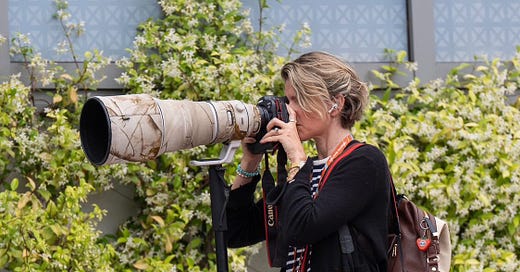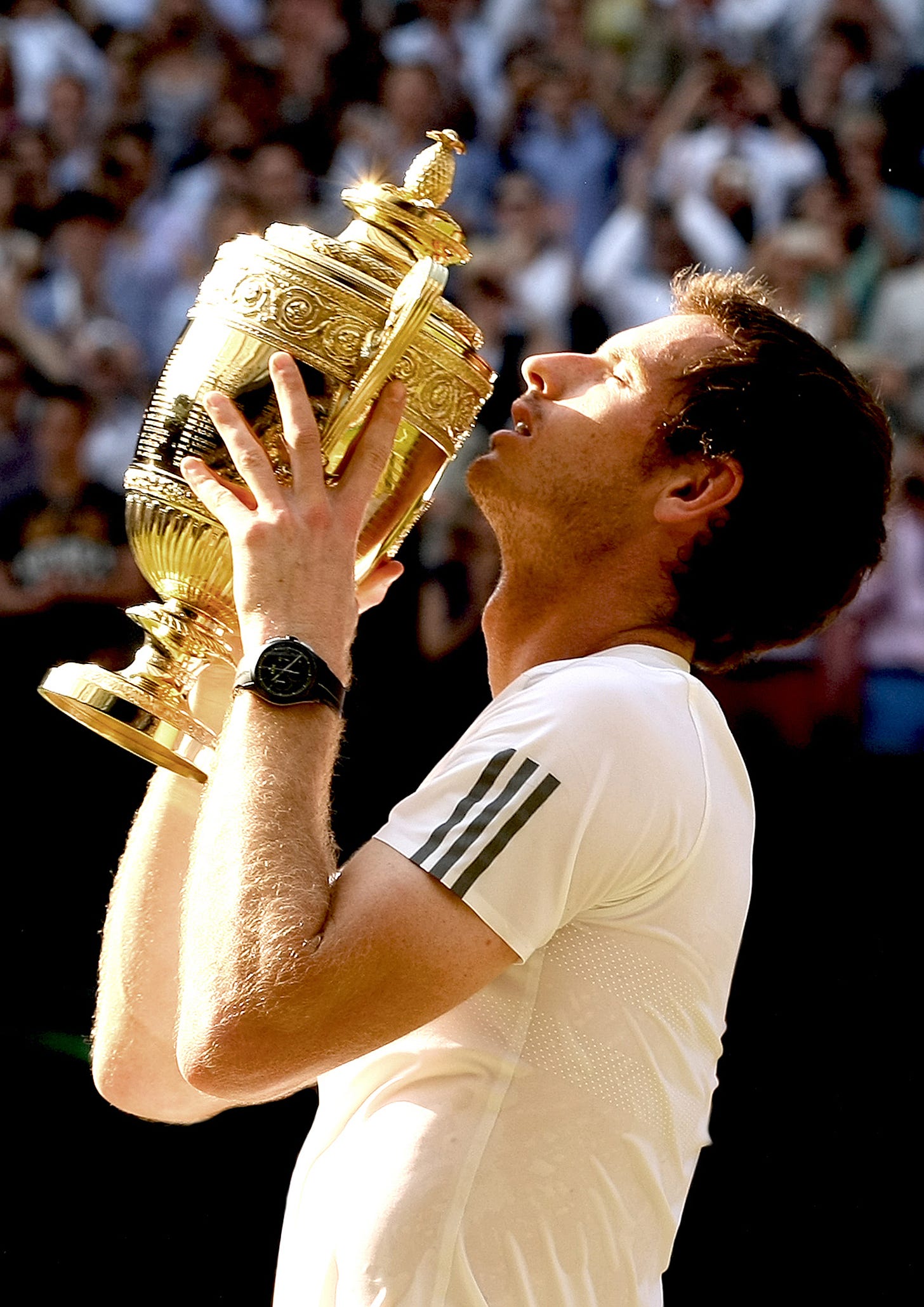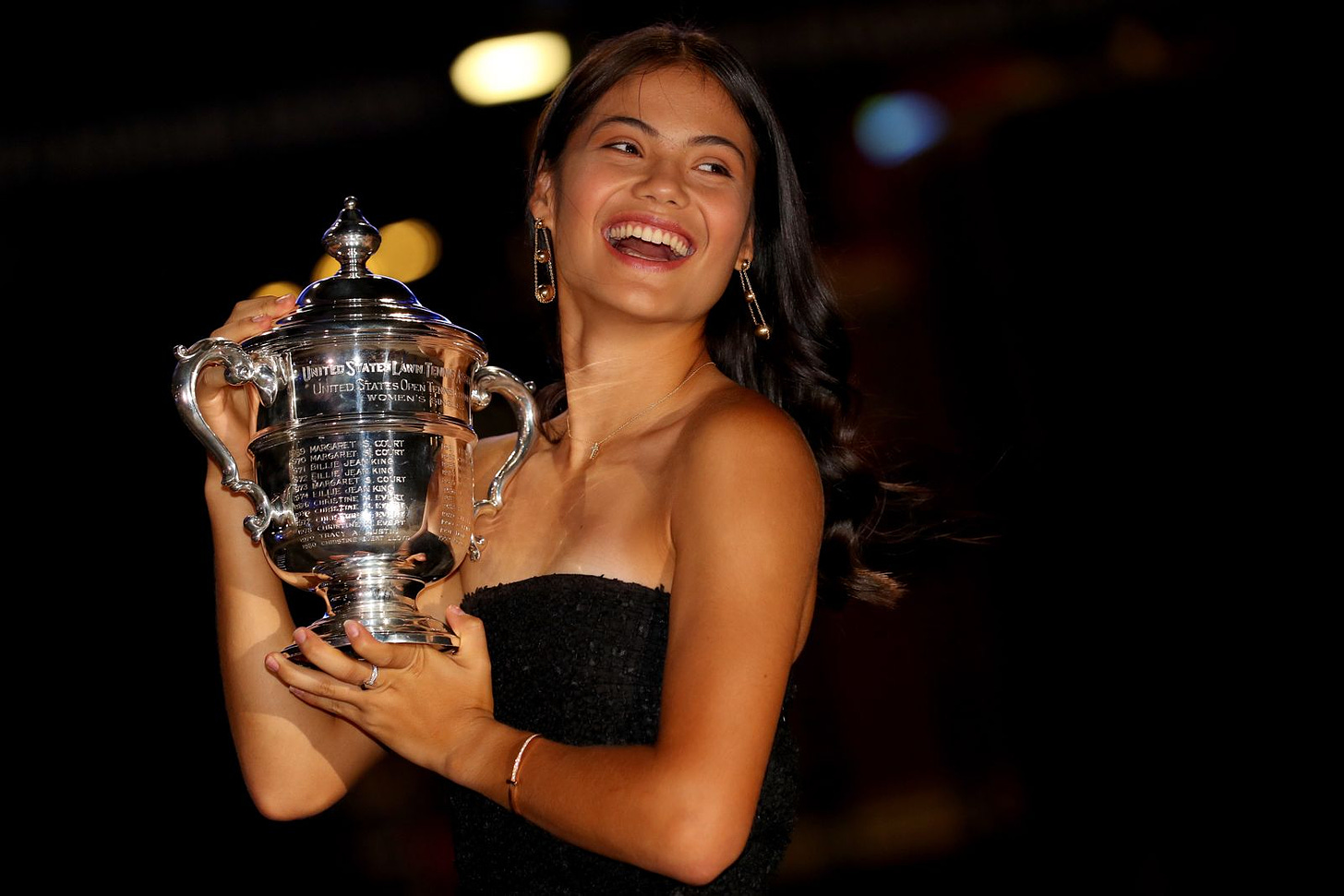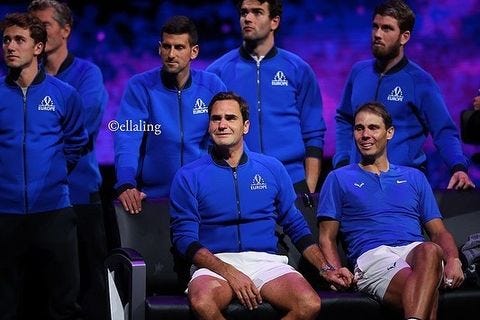The most important moment of Ella Ling’s career came at the exact moment of Andy Murray’s. As he clinched his first Wimbledon title in 2013, on his fourth match point against Novak Djokovic, Ling had the best seat in the house.
She was a few metres away, on the photographer’s bench in the sunken bank alongside Centre Court. If you watch clips from the match back, you can even see her in the background of some shots, her cropped blonde bob helping her stand out alongside her mostly male colleagues.
She was fortunately on the same side of the net as Murray and ready to capture history as Wimbledon waited to crown its first British men’s champion in 77 years.
Ling readied her lens and double-checked her camera settings as Murray served. When Djokovic dumped his backhand into the net, she focused in on Murray, finger hovering on the trigger to capture the long-awaited moment of victory.
Then, Murray spun away from her entirely - turning to face the members of the written press up in the stands instead.
“We were all very nervous, because it would be one of the biggest stories in British sports history,” Ling says. “You just get one chance to do it. There are so many things that can go wrong - you’ve got to pick the right lens, look at the light, think ahead about what he’s going to potentially do. The camera could freeze up, you just don’t know. But no one expected him to turn completely the wrong way. We were all gutted.”
She laughs, recalling the anticlimactic feeling: “The literal biggest moment of our careers and we just got his back. The best shot came from the crowd I think, which is quite annoying.”
That is the risk you run as a photographer at Wimbledon. The light could be perfect, your seat could be best placed, and your subject could be one of the most expressive champions to ever grace a tennis court. But if he turns his back to you, there is no way you are getting the winning shot.
Luckily, Ling usually puts herself in the right place at the right time. An image from later that afternoon on Centre Court, as Murray lifted the trophy for the first time, ranks as one of her most memorable.
“I find trophy presentations quite cold - it’s boring, everyone’s got the same shot. But there was one shot I was really happy with. He lifted up the trophy, kissed it, and — this is why photography is so great, because you’d miss it on TV — he closed his eyes for like a millisecond.
“There was a gap between the trophy and his face, the golden light, it just looked like a moment where he thought ‘I’ve done it.’ You don’t really see it on TV or in person, but it summed up the whole all those years and the relief.”
Those almost private moments in the most public of environments are rare, but they are the money shots that Ling finds herself aiming for.
Ling has been a tennis fan for as long as she can remember and she developed her love for snapping players after becoming obsessed with Goran Ivanisevic as a pre-teen.
She has been coming to Wimbledon for most of her life as a fan, and 20 years as a freelance photographer. Her first in 2005 was a wild ride, where she queued up fresh out of university, with her camera in hand. Once onsite with a grounds pass, she managed to meet up with the Telegraph’s photographer via a family-friend who worked at the newspaper, and he told her to spend the day snapping pictures around the grounds.
After assessing her work at the close of play, he then introduced her to Wimbledon’s in-house photographer who took Ling under his wing. She was handed an accreditation and the rest is history.
For two decades she has followed the tennis tour around the world.
At Wimbledon, getting around the grounds is often the hardest part. She has fought her way through the punters funnelled between the outside courts five to eight, often restraining herself from deploying her bulky camera equipment to swat away people at particularly crowded moments.
“You walk with the bloody crowd. I mean, there’s a tunnel from the photo room to No 1 court, and another which comes out at Court 3, but you’ve still got to go with the public. Wimbledon’s tough, it’s hard to rush to a court. At some point you’ve got to get your elbows out, or whack someone on the head with your lens. Walking behind players, in their slipstream with their security escorts, is the best.”
People often ask her what her favourite match to be at was, and Ling struggles to find an answer. Though she has been witness to some of the greatest finals and moments of all time, she says she barely gets a glimpse of the points themselves.
“You know what the score is, but I don’t know what’s gone on during the points. It’s actually annoying,” she laughs. “People think I’m just sitting courtside with the best seat in the house — and it is the best seat, but I can’t watch. I feel guilty putting my camera down for one point because I might miss something.”
What of the shots she wish she took? “Simply because I wasn’t there, the Olympics where Murray won in London in 2012. I wanted to shoot the Olympics that year but I missed the deadline. It’s the one from his career I don’t have in my portfolio. But that’s life.”
Away from Wimbledon, Ling has been present for some of the sport’s most memorable moments. She was the only British photographer on site for Emma Raducanu’s entire run to a remarkable US Open title in 2021. Her shot of Raducanu parading around the Flushing Meadow grounds with the trophy made the front page of every national newspaper the following day.
But the photo that went viral for Ling came at the Laver Cup in 2022, at Roger Federer’s final professional appearance, when he sat next to longtime rival Rafael Nadal and both bawled their eyes out. For a brief moment, they held hands, and Ling clicked the shutter on her camera. The result was a photograph that is easily Ling’s most recognisable.
Millions of people viewed it, she featured on CNN and she has gone on to sell limited edition prints of the image. Federer even has one of those prints, signed by Ling, displayed in his home.
“At the time I didn’t really know what I’d taken until I went back to my computer and was sending my best shots and it was one of them. After I was done with work I wanted to put something on social media and I wasn’t even 100 per cent on putting that one up. But it was unusual that two players would be holding hands - it’s not every day that happens.
“It is so surreal for me now, because it became so big. I got so sick of it. I couldn’t see it objectively anymore. It became this thing I saw all the time. People bugging me about it and I thought, what’s the big deal? I couldn’t see it for what it was, it’s only now I do.”
Throughout her career, one thing Ling has contended with is being one of the only women on tour. At Wimbledon, of the 152 accredited photographers, only 12 are women. You have to have “thick skin and a certain personality” to thrive in a male-dominated environment, Ling says, but she also thinks it has helped her differentiate her work.
“I think it helps me in a way because I stand out a little bit. It helps to be different. Being a female helps a little bit as I think our minds are a bit different. The men focus on the action a bit more I would say, but forehand, backhand - everyone’s got those shots. I think I like the emotion.”
She hopes to put together a book or exhibition next year, on Andy Murray’s career or the Big 4. She counts Nadal as one of her favourite male players to shoot, because of his physicality and how expressive he is, alongside the dynamism of Dustin Brown. But her GOAT subject was Serena Williams.
“When she retired I was so sad because there’s no one like her in tennis,” Ling says. “She gave you everything: so athletic, so emotional, very striking, the hair was different every tournament, the clothes, she was unique. I found her very beautiful, Venus as well. But Serena was more expressive. You got everything from her.”
Recommendations
Staying on the theme of tennis, I’m currently reading Mark Hodgkinson’s new book ‘Searching for Novak’ which came out last week - it’s brilliant so far. You can buy it here.
That’s all for now, thanks for reading!







